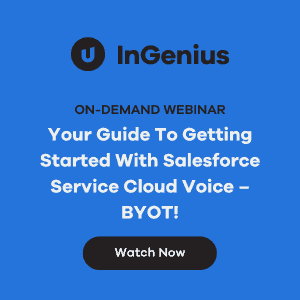As technologies have evolved and customer expectations have increased, the contact center has become a much different place than it was 20 years ago.
From email marketing to social media engagement and chatbots, there are now so many ways a customer can interact with a business. As a result, it makes sense that contact centers would change their approach to how they service their customers.
Rather than try to handle everything under one roof, it is now standard practice to have different types of contact centers for different types of businesses based on the product/service they are providing. By doing this, businesses can work much more efficiently, achieve better results, and deliver a much better customer experience (CX) over each channel.
In this blog, we are going to explore what these different contact center groups are, and help you identify which category you fall in to.
The different types of contact center
The inbound contact center
When you think of a traditional contact center, you might think of one that is set up to answer phone calls and not much else. These are inbound contact centers.
These centers are the meat and bones of customer service, and the main objective is to respond to customer issues like service questions, inbound sales inquiries, order fulfillment, technical concerns, and general help desk matters.
Though this is a basic type, the demand for inbound contact centers remains large as many people still prefer communicating with businesses through voice. Inbound houses still run on relatively new tech, like voice over internet protocol (VoIP) and will utilize interactive voice response (IVR) to deliver efficient, speedy customer service.
At some level, all businesses big and small will have some process in place for responding to customer queries. However, depending on the size of your business, the demands of your customer, and the volume of calls you receive, these basic methods may not be enough.
In this case, it would be advisable to open a dedicated inbound contact center with the infrastructure and staff capable enough to meet the expectations of your customers.
The outbound call center
Rather than receiving calls from customers, outbound contact centers are what businesses use to engage with their clients in proactive sales and marketing. Mostly, these outbound houses are used to help promote business growth by bringing new customers into the fold.
Things like telemarketing, sales, cold calls, customer follow-ups, upselling, and lead generation, are all typical examples of what goes on inside an outbound contact center.
Any business that plans to expand and grow their company in-house will not get far without one of these outbound platforms.
A sound strategy is essential for success, identifying the types of customers you are going to target, as well as a precise method for how you are going to win them over.
The multichannel contact center
Here is where things start getting a bit more interesting. Up until now, we’ve spoken about contact centers that use traditional channels like phone and email, but in today’s day and age that is often no longer enough.
On average, a customer will use as many as 4-5 channels when contacting a business, and the multichannel contact center is there to support this demand.
Along with phone and email, the multichannel also provides support for social media, mobile apps, websites, chatbots, instant messenger, SMS, plus countless others. Though phones still play an essential role in these contact centers, they are just one of many tools used in the multichannel environment to help the business deliver excellent customer service.
If you’re looking to establish your brand as a market leader, investing in a multichannel contact center will give you a massive advantage over your competitors.
Rather than engaging with the customer on the phone, you’ll be able to utilize more channels and implement various strategies through a multichannel contact center to ensure you get the results you want.
The omni-channel contact center
Much like a multichannel center, the omni-channel contact center uses various entry points to deliver service to its customers and improve business communications. The fundamental difference, however, is that the omni-channel center managed to seamlessly combine all separate communication entry points into one unified platform. As a result, businesses can deliver a much more personalized service to each and every customer, rather than a one-size-fits-all approach.
In an omni-channel center, everything is integrated, meaning all data is openly accessible irrespective of where and when it was taken. Agents have a clear view of the entire customer journey and can easily access all the information they need to deliver the type of tailored service modern customers have come to expect.
It goes without saying that any business looking to win the satisfaction of their existing customers and bring new ones into the mix in droves, would benefit enormously from an omni-channel contact center.



